Branson, Missouri
 What is an example of a work of art that expresses a political perspective contrary to your own political beliefs, yet you nevertheless admire? Not simply that the creator holds different views, but the work itself as created is an expression of those views you may find distasteful… yet in spite of (or maybe even because of) that fact you’d still list it among your favorites? It’s a common experience: many liberals might deeply appreciate films by Clint Eastwood, while plenty of conservatives still share deep reverence for Bruce Springsteen, even in full knowledge of the political views represented. So it also goes with theme park fans. Many tend to be personally left-leaning, yet the medium in general is to be largely influenced by ideas and individuals on the right, in particular Walt Disney’s own conservative worldview that’s manifested deep throughout the design language of Disneyland.
What is an example of a work of art that expresses a political perspective contrary to your own political beliefs, yet you nevertheless admire? Not simply that the creator holds different views, but the work itself as created is an expression of those views you may find distasteful… yet in spite of (or maybe even because of) that fact you’d still list it among your favorites? It’s a common experience: many liberals might deeply appreciate films by Clint Eastwood, while plenty of conservatives still share deep reverence for Bruce Springsteen, even in full knowledge of the political views represented. So it also goes with theme park fans. Many tend to be personally left-leaning, yet the medium in general is to be largely influenced by ideas and individuals on the right, in particular Walt Disney’s own conservative worldview that’s manifested deep throughout the design language of Disneyland.
Silver Dollar City is a very culturally conservative park… to a far greater degree than any Disney park has ever been. Obviously there’s the chapel in the middle of the park’s antique village that still holds daily services. As I was entering the park, a greeter warmly told me to “Have a blessed day!” Gift shops often sell Christian tschotskes. Much of the storytelling, even in recent attractions, is so averse to anything that could even remotely be considered lacking in moral clarity that they get boiled down to just loudly stating “the good guys always win,” or “dream big and do good” at the end. The park’s slogan at the entrance states “You have a great past ahead of you,” underscoring the rose-tinted nostalgia for a happier bygone era that is the park’s central theme, and when you deconstruct it, is practically indistinguishable from the underlying sentiments that fueled “Make America Great Again.” Also, I’m fairly certain the only non-white characters I saw represented anywhere in the park were prisoners in the Flooded Mine attraction.
of you,” underscoring the rose-tinted nostalgia for a happier bygone era that is the park’s central theme, and when you deconstruct it, is practically indistinguishable from the underlying sentiments that fueled “Make America Great Again.” Also, I’m fairly certain the only non-white characters I saw represented anywhere in the park were prisoners in the Flooded Mine attraction.
Silver Dollar City is certainly not the Ark Encounter or Holy Land Experience, but this is a park deep in the Bible Belt that makes no secret of who its primary audience is. Yet even despite (or maybe even because of) these facts, I’d still place Silver Dollar City on my shortlist of the best theme parks in the United States.1
 Many contemporary theme parks use berms to shut themselves inside their own manufactured world, a so-called industry “best practice” that mostly exists to both enrich and simplify the jobs of designers and builders. As much as possible, I believe that theme parks need to make an effort to be open to and in dialogue with their surrounding environments and communities. I don’t undertake the expense of travel just to shut myself inside a fantasy realm that could have been anywhere or nowhere. There should always be something unique about that particular place in the world that this theme park is authentically a part of. Many amusement parks do a good job of this2 but Silver Dollar City is one of the foremost examples of a fully themed park that nevertheless feels a part of the world outside its gates. Obviously there’s the natural beauty of the Ozark mountains that create the landscape for the very hilly park as well as an expansive backdrop that can be witnessed in certain vistas far beyond the property line. There’s also the Marvel Cave tour,
Many contemporary theme parks use berms to shut themselves inside their own manufactured world, a so-called industry “best practice” that mostly exists to both enrich and simplify the jobs of designers and builders. As much as possible, I believe that theme parks need to make an effort to be open to and in dialogue with their surrounding environments and communities. I don’t undertake the expense of travel just to shut myself inside a fantasy realm that could have been anywhere or nowhere. There should always be something unique about that particular place in the world that this theme park is authentically a part of. Many amusement parks do a good job of this2 but Silver Dollar City is one of the foremost examples of a fully themed park that nevertheless feels a part of the world outside its gates. Obviously there’s the natural beauty of the Ozark mountains that create the landscape for the very hilly park as well as an expansive backdrop that can be witnessed in certain vistas far beyond the property line. There’s also the Marvel Cave tour, the original experience that Silver Dollar City was created to support and to this day reinforces why this theme park is located here and nowhere else in the world. But it’s also frankly Branson itself, the park’s connection to country music culture and everything representing the Id of Middle America that can be found approaching the park on the Country 76 Strip. I may not personally identify with it all, but that’s the thing about art: done well and with enough authenticity of conviction, it can transcend cultural and political divisions, even if it still is making a cultural and political statement.
the original experience that Silver Dollar City was created to support and to this day reinforces why this theme park is located here and nowhere else in the world. But it’s also frankly Branson itself, the park’s connection to country music culture and everything representing the Id of Middle America that can be found approaching the park on the Country 76 Strip. I may not personally identify with it all, but that’s the thing about art: done well and with enough authenticity of conviction, it can transcend cultural and political divisions, even if it still is making a cultural and political statement.
This all makes Silver Dollar City a surprisingly top-tier theme park that exemplifies many of the qualities I’d advocate for in theme park design. Be connected to the location and not apart from it. Be genuine in expressing the park’s identity, whatever it may be. Use nature over artifice wherever possible. Invite exploration and small moments of wonder and discovery. Be weird and break the rules a little bit. And make sure the rides are all actually good.
Wildfire
It’s weird that the sitting coaster, seemingly the most “traditional” model in the catalog, is actually B&M’s least produced major model. Wildfire is doubly rare, being the singular looping model ever produced with basically the same tipped-back, open-air vehicles as their mega-coasters, only with shoulder harnesses instead of clamshell restraints. It’s a far more comfortable ride than the majority of B&M’s other above-the-rail riders, and more stylish too than the nose-less floorless cars. Oh well, it just makes this 2001 coaster all the more special.
Wildfire provides spectacular vistas overlooking the Ozarks and some spectacular airtime down its straight first drop. The element lineup that follows is fairly standard but the airy flow takes advantage of the location and comfortable rolling stock in the best of ways. The only knock against Wildfire is its brevity, falling a little short on substance compared to its older brother Kumba, but is otherwise a standout attraction to form the backbone of Silver Dollar City’s thrill ride collection. It also still has the best theme of the park’s major attractions, with Professor Horatio Harris’ cockamamie contraptions and patent filings scattered around the queue offering the kind of oddball fun and attention to detail that contrasts to the more straight-laced stories found on the other attractions.
Powder Keg: A Blast in the Wilderness
I remember reading the late Stan Checketts of S&S in an interview with Amusement Today when Powder Keg debuted. Rather than offer the usual plaudits for a press quote while opening a new attraction, he griped to the reporter about being forced by the park to integrate track from the Premier-made Buzzfall Falls that preceded it. It cost more to try to incorporate the leftovers into the new engineering rather than just tear it all down and build the whole thing from scratch, he grumbled.
that preceded it. It cost more to try to incorporate the leftovers into the new engineering rather than just tear it all down and build the whole thing from scratch, he grumbled.
While I certainly appreciated his earnest transparency into the design process, I’m also glad that Silver Dollar City forced Stan into adaptive reuse, and not just because it led to the entertaining quotes. The hybrid approach reusing part of the old water coaster track adds an element of novelty and chaos into the middle of the ultra-precise engineering that otherwise defines most of the attraction. Beautiful floater airtime high over the Ozarks initiates the experience, including a couple of “dragonfly turns” that pitch riders 90 degrees sideways while in the middle of a float. But then it transitions into the Premier track and suddenly the ride becomes an out-of-control feast of lateral G-forces that seems to careen into the midcourse lift far faster than intended. Despite the explosive start, a rather anticlimactic denouement after the lift hill brings Powder Keg to a too-early finale… not that the ride time needs extending when one-train operation seems to be the norm.
Outlaw Run
If measured foot for foot, then Outlaw Run would probably rank as one of the best roller coasters in the world. It’s not even 3,000 feet long. There are better coasters out there, but most need another one or two thousand feet of track to prove their greatness. How, after almost a decade, does Outlaw Run continue to stand near the front of the pack of RMC creations despite plenty of newer, longer, and more extreme examples?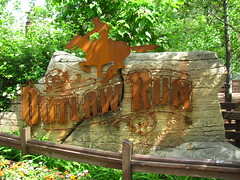
The brevity may help. The ride can push the envelope in terms of force and pacing in a way that wouldn’t be as tolerable if stretched out to 4,000 feet or more. Many of the newer RMC layouts have a certain over-indulgence that Outlaw Run had to tighten and focus. For example, it doesn’t have a fully inverted “top gun stall” that would come around two years later, but its opening overbanked inversion, while “less extreme” on paper, might actually have better flow that establishes the breathtaking pacing. There’s also the setting, both the beautiful wooded Ozarks that enhances the sense of speed and surprise, and the uneven terrain that allows the coaster to go much faster and sustain its speed through the layout.
Then there’s the finale. Outlaw Run’s double inclined barrel roll is just about as perfect as a set of coaster inversions can go. Insane yet not uncomfortable, with a pacing that starts breakneck yet finishes with perfectly balanced hangtime. Most RMC coasters don’t bother much with big finales (it’s hard to when every element before it is also attempting to be as “big” as possible), which makes Outlaw Run’s stand out all the more, especially since nothing that comes before it feels in any way neutered. I’m a sucker for helix finales for a variety of reasons that all apply here as well, which is essentially a helix that has been pulled out on its axis. An all-time top three coaster finale.
One thing of note is how much like a wooden coaster Outlaw Run now feels like after nine years of operation. On my first ride on Outlaw Run in 2015 it felt pretty much like any other RMC I-Box coaster and I always figured the two track systems offered interchangeable experiences: I-Box for the structural integrity on converted coasters, Topper Track for new builds so they could claim the wooden coaster status. But it truly is a wooden coaster. Having seen how other “wood-for-steel” coasters like Lightning Rod or the Intamin Plug-and-Plays have (or haven’t) held up over the years, it does make me concerned about their long term viability. Whether Outlaw Run may also jump into the “steel” column in the near future, it will always be one of the world’s great roller coaster experiences.3
Time Traveler
 Between Outlaw Run and now Time Traveler, Silver Dollar City has proven they like to put inversions on coaster styles where they aren’t expected. I’ll be honest: I didn’t get the point of Time Traveler when it was first announced. They took a respectable Mack looping coaster and put spinning cars on it just… because? In my experience, spinning cars are when you’ve got a lemon of a layout and need something to make it more interesting. But if the coaster is already interesting, then spinning seems like a distraction to its better qualities.4
Between Outlaw Run and now Time Traveler, Silver Dollar City has proven they like to put inversions on coaster styles where they aren’t expected. I’ll be honest: I didn’t get the point of Time Traveler when it was first announced. They took a respectable Mack looping coaster and put spinning cars on it just… because? In my experience, spinning cars are when you’ve got a lemon of a layout and need something to make it more interesting. But if the coaster is already interesting, then spinning seems like a distraction to its better qualities.4
But now I get it: it’s slow enough that the spinning is not about the rotation, but the orientation. If you’ve ridden a coaster enough times, sometimes you want to try new perspectives. That’s what the Extreme Spinning Coaster is for. It’s cool to do a vertical drop backwards, or take a vertical loop sideways. And you don’t always know what experience you’re going to get until it actually happens. Designers often justify spinning coasters for their “repeatability” since it introduces an element of chance, but if the spinning is too fast, there’s no meaningful variability, just sustained dizziness (which is the opposite of repeatability). Time Traveler slows it down and makes a ride that is genuinely and joyfully repeatable.
I’ll admit that I still don’t understand the connection to the theme. I guess the spinning clock hands and gears represent spinning? Apart from the light steampunk aesthetic, there’s a lot of backstory and characterization that went into Time Traveler’s setting, but it seems to skip that actual time travel part of the story and then jumps ahead to some cheesy moralizing at the end. I can’t help but wonder if the twin launches were supposed to have some sort of “time tunnel” effect that got cut for budget? It would certainly explain the weird pause in the middle of the ride, making it the third Silver Dollar City coaster with an awkwardly placed lull in the pacing. Speaking of which…
Thunderation
I want to declare Thunderation as one of the best Arrow mine train coasters, but the way it paces itself is just too… disappointing. Most Arrow mine trains can feel rather meandering and random, though usually they at least have the good sense to throw in either a big helix or a surprise tunnel as a finale. I’m rarely blown away but at least I leave satisfied that I got the experience I queued for.
By contrast, Thunderation is by far the most focused of any of the mine train layouts, quickly building up speed with a downhill run out of the station before a massive spiraling helix centerpiece. Escaping the vortex through a tunnel at the center, it emerges seconds later for a breathtaking climax deep at the bottom of the valley. This segment used to be absolutely incredible for cutting through a dense grove of trees at breakneck speed, although now is a much less impressive speedy curve ever since Time Traveler cleared the surrounding forest to assert its own dominance over Thunderation. A bit disappointing since my last visit, yet it’s barely half of a full ride when the energy suddenly dissipates and it’s facing a long, noisy chain lift back uphill. A curving drop through the trees promises more good things to come, but it never comes close to matching what came before, and ends up back at the station moments later. It’s a coaster that starts explosively but ultimately spends the majority of the ride time fizzling out.
The Great Exposition
Silver Dollar City’s organic park layout has left many of the newer expansions sitting at the end of long cul-de-sacs, like a hub-and-spoke without the rim, or a particularly wriggly octopus. The longest of these tentacles was added in 2006 for The Grand Exposition, a 10-pack of carnival rides found at the far end of Silver Dollar City’s Valley Road that’s quite a hike for not a lot of reward.
 The Grand Exposition gives theme park aficionados plenty to both loathe and love. On the one hand, the whole land is little more than a flat ride showcase for Zamperla, essentially an IKEA showroom for amusement parks. The theming budget has been cut back to mostly rely on signage and graphic prints. Yet, despite how little of substance there is, the details have been filled with enough panache to elicit a response of “oh that’s pretty cute/clever/creative” from appreciators of themed design. Posters are painted with appreciative artistic detail, and off-the-shelf attractions are cleverly colored and named to match the Expo theme, which are sorted into conceptually pleasing sub-categories such as the Arts, Industry, Science, and Commerce. Besides, there’s something about World Expos (old ones at least) that’s like catnip for a certain breed of theme park fan. It’s a mix of aesthetic appreciation, cultural nostalgia, and the old-fashioned modernist belief in human progress. It’s not the same level of obsession as those who believe the Tartarian Empire was a real thing, but I suspect some of the psychological impulses may be the same. Of course, regardless of what the aesthetes and historians may think, it’s clear from the many delighted children that would happily spend all day here that the Grand Exposition was never meant for us to begin with.
The Grand Exposition gives theme park aficionados plenty to both loathe and love. On the one hand, the whole land is little more than a flat ride showcase for Zamperla, essentially an IKEA showroom for amusement parks. The theming budget has been cut back to mostly rely on signage and graphic prints. Yet, despite how little of substance there is, the details have been filled with enough panache to elicit a response of “oh that’s pretty cute/clever/creative” from appreciators of themed design. Posters are painted with appreciative artistic detail, and off-the-shelf attractions are cleverly colored and named to match the Expo theme, which are sorted into conceptually pleasing sub-categories such as the Arts, Industry, Science, and Commerce. Besides, there’s something about World Expos (old ones at least) that’s like catnip for a certain breed of theme park fan. It’s a mix of aesthetic appreciation, cultural nostalgia, and the old-fashioned modernist belief in human progress. It’s not the same level of obsession as those who believe the Tartarian Empire was a real thing, but I suspect some of the psychological impulses may be the same. Of course, regardless of what the aesthetes and historians may think, it’s clear from the many delighted children that would happily spend all day here that the Grand Exposition was never meant for us to begin with.
The Flooded Mine
Originally built in 1968, the Flooded Mine certainly feels of the same era as dark rides at Disneyland or Knott’s of a similar vintage, only without the updates that have brought those other attractions into the 21st century. The premise marries a few favorite theme park tropes—mine rides, water flumes, and “dangerous” characters rendered comically harmless as animatronics trapped in Sisyphean toil—and puts them together into an odd conceptual stew that trusts that you don’t think too deeply about it.
There’s trouble in the mine shaft (of course it’s a mine shaft, it’s a dark ride in a rustic theme park!), which has flooded (what else explains the presence of water channels and boats running through the mine, which were the most reliable dark ride transport system in the 1960’s!), and the chain gang (ooh, scary criminal types which can be conveniently dressed in identifiable, matching costumes!) has revolted and is trying to escape. Which… seems reasonable given the circumstances? The animatronic figures don’t appear to have been given any significant upgrades over the decades, including improving the diversity.5
However, one modern upgrade they did choose to invest in was the predictable “interactive shooter” trope. Now riders are armed with pistols to shoot at prisoners as they try to escape from literally drowning under indentured labor. Which, when you think about the historical context within this Missouri history-themed park, is pretty bleak. Once again, theme parks are very much works of political art.
Fire in the Hole
From the Flooded Mine to the other classic Silver Dollar City dark ride from 1972, Fire in the Hole features a unique powered roller coaster conveyance with a drop and splashdown finale, with a dark ride storyline featuring firefighters and… oh, god, are those Klansmen? No, sigh of relief, Silver Dollar City doesn’t ever go there. They’re actually Baldknobbers, a group of 1880’s vigilantes based around the Ozarks who wore painted hoods, were Union supporters, and tried to root out crime and corruption in their communities before things started to get out of hand. (So, basically, really shitty hillbilly Batman cosplayers). Whatever the political complexities in 19th century Ozaraka that earned them their historical reputation, the modern reinterpretation of the Baldknobbers in Fire in the Hole sees them as generic faceless villains who can randomly pop up for a scare and they all get hanged at the end of the ride before the big drop. Whee!
storyline featuring firefighters and… oh, god, are those Klansmen? No, sigh of relief, Silver Dollar City doesn’t ever go there. They’re actually Baldknobbers, a group of 1880’s vigilantes based around the Ozarks who wore painted hoods, were Union supporters, and tried to root out crime and corruption in their communities before things started to get out of hand. (So, basically, really shitty hillbilly Batman cosplayers). Whatever the political complexities in 19th century Ozaraka that earned them their historical reputation, the modern reinterpretation of the Baldknobbers in Fire in the Hole sees them as generic faceless villains who can randomly pop up for a scare and they all get hanged at the end of the ride before the big drop. Whee!
“They don’t make ‘em like they used to” certainly applies to a lot of qualities about Fire in the Hole, thematic and otherwise, yet the ride is a stone-cold classic for good reason. The minimalist vehicles and tight clearances gives the ride a sense of immediacy and intimacy that’s lacking from many modern dark rides, yet the dark double drop and water splashdown is a surprisingly wild finale. It’s also frankly shocking how many show scenes were able to be fit into such a tight space, including an entire outdoor night scene with a full moon. Rumor has it the attraction has indeed reached the end of its service life and will be rebuilt as a modern incarnation in the more thematically fitting Fireman’s Landing section. Let’s just hope it’s able to preserve the spirit and nostalgia of the original… perhaps sans lynching.
Mystic River Falls
My love-hate relationship to water rides is well documented on these pages. I don’t like to get wet, which of course makes the rides all the more exciting when there’s a legitimate possibility of getting wet that is averted at the last second, or at least mitigated to a more manageable spraying. Given the fuss over Silver Dollar City’s $23,000,000 replacement for Lost River of the Ozarks, I was certainly tempted to give it a ride, on the condition that it didn’t appear too soaking and/or there were protective ponchos available for purchase. Neither was the case. So I had to content myself with a few photos and a reminder that, should I even return, I’d have to pack my own waterproofing supplies.
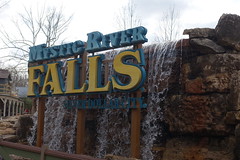 I don’t intend to be a fun-sponge, but seriously, where is the fun in a ride that is guaranteed to get you completely drenched from head-to-toe while wearing street clothes? Has no one heard of chaffing? The fun of these rides has always been in their randomness, not in their inevitably. Sometimes less is more! The rotating elevator lift is certainly a unique mechanism to watch, but there’s not very much mysticism surrounding this river. Where the Lost River had a fairly low-key and naturalistic presentation that integrated well with the surrounding landscape, Mystic River Falls is a showboating blockbuster attraction that dominates the landscape with manmade structures to prove to onlookers how much Serious Fun it is. Please, hold the shark memes and just give us some trees with nice water features and rockwork!
I don’t intend to be a fun-sponge, but seriously, where is the fun in a ride that is guaranteed to get you completely drenched from head-to-toe while wearing street clothes? Has no one heard of chaffing? The fun of these rides has always been in their randomness, not in their inevitably. Sometimes less is more! The rotating elevator lift is certainly a unique mechanism to watch, but there’s not very much mysticism surrounding this river. Where the Lost River had a fairly low-key and naturalistic presentation that integrated well with the surrounding landscape, Mystic River Falls is a showboating blockbuster attraction that dominates the landscape with manmade structures to prove to onlookers how much Serious Fun it is. Please, hold the shark memes and just give us some trees with nice water features and rockwork!
Marvel Cave Tours
 Speaking of impressive rockwork… the original Silver Dollar City attraction is still one of its best. Yes, cave tours are a relatively common tourist phenomenon, and no, Marvel Cave doesn’t hold a candle to what you can see at National Parks like Mammoth Cave or Carlsbad Caverns, if caves are your top priority. But a day at a theme park comes with a limited number of different paces and emotions. Going on a real cave tour is an adventure of a completely different type at a scale unlike anything found at any other blockbuster park. It adds texture to a day in a way that few other parks can claim. Like so much else that’s kind of weird or different about this theme park, it’s one of many reasons that makes Silver Dollar City one of the best parks in the country.
Speaking of impressive rockwork… the original Silver Dollar City attraction is still one of its best. Yes, cave tours are a relatively common tourist phenomenon, and no, Marvel Cave doesn’t hold a candle to what you can see at National Parks like Mammoth Cave or Carlsbad Caverns, if caves are your top priority. But a day at a theme park comes with a limited number of different paces and emotions. Going on a real cave tour is an adventure of a completely different type at a scale unlike anything found at any other blockbuster park. It adds texture to a day in a way that few other parks can claim. Like so much else that’s kind of weird or different about this theme park, it’s one of many reasons that makes Silver Dollar City one of the best parks in the country.





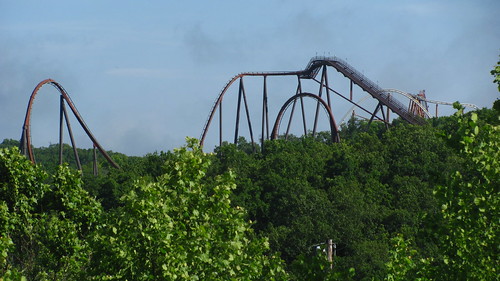

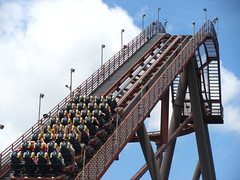




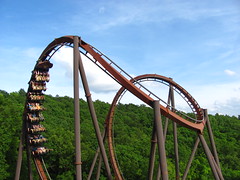



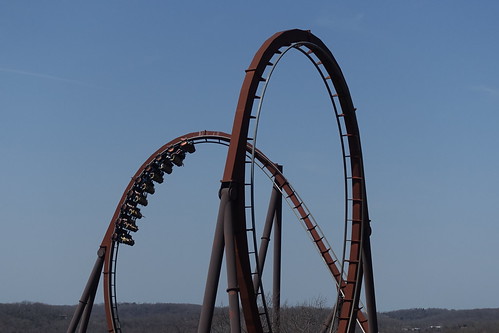































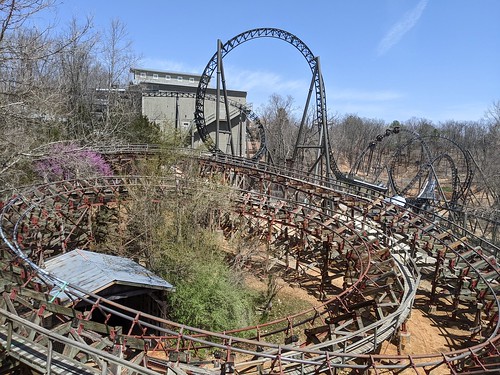
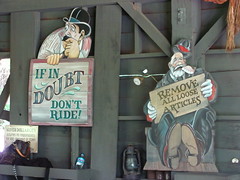































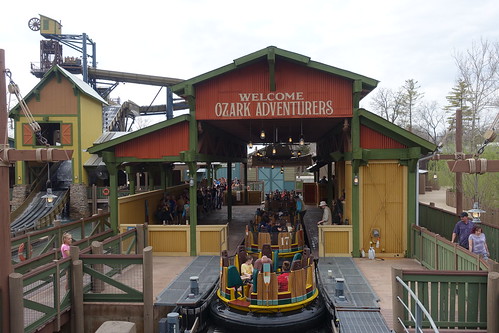


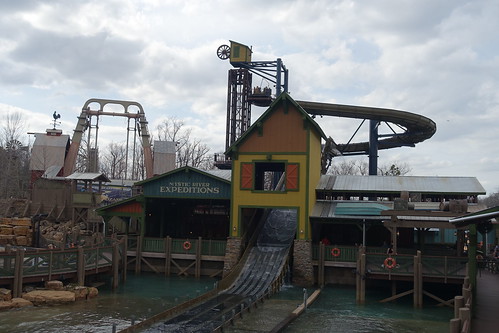
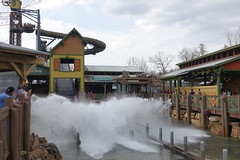




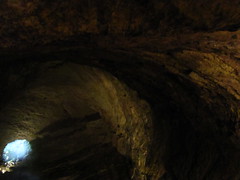


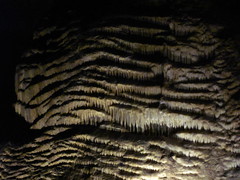
Footnotes & Annotations
[1] Okay, the representation problem is the one thing on that list of conservative signifiers that genuinely feels uncomfortable and needs to be addressed. Even if (or, frankly, especially because) it’s seen as not being “historically accurate” representation, Silver Dollar City would better live up to their own stated values if they made a more deliberate effort to show their already very fictionalized and fantastical version of the past as being a place that was open and inclusive to EVERYONE.
[2] e.g. Cedar Point’s connection to the beaches and water, or Kennywood’s steel coasters looming over the birthplace of American steel.
[3] Just as long as Silver Dollar City doesn’t also inherit Dollywood’s recent management ethos and declare the extermination of all trees within glancing distance of their rides.
[4] It didn’t help perceptions that Mack Rides first tested the Extreme Spinning Coaster concept on their Blue Fire at Europa-Park, which was also the same attraction that tested and gave the world VR coaster overlays.
[5] A few generically dark-skinned figures are the only non-white fictional characters I witnessed represented anywhere in Silver Dollar City.
Just want to say that I was a huge fan of this page growing up and it’s so great that you still find the time to update it from time to time. You are the only writer I have encountered that has made going to Idaho seem like a compelling idea.
*Missouri… brainstorming a potential Silverwood trip as I wrote that and it seems the coffee hasn’t quite kicked in
Is it weird that, after reading your glowing review of a beautiful park, I don’t really want to go here anymore? Shooting at escaping prisoners? Lynching the enemies of the Confederacy? No thank you.
Jack, thank you so much! I’ve gone through different phases of trying to decide how to continue this website, but I’m keen to keep it going on occassion when a subject strikes and am very happy there are people out there who’ve been with it for a long time and still like reading as well!
Funny that Niels has seemingly the opposite reaction as Jack with regards to visiting. Some of it is very conservative, and some of it is simply weird. But so are a lot of other parks, which is kind of expected for businesses that are often built in places where land is cheap and tourists aren’t going to more cosmopolitan destinations.
I’ll echo Jack in my enduring appreciation of this page. I’m firmly of the opinion that every art form has its own unique strengths and can produce singular masterpieces no other medium can replicate. Roller coasters are especially compelling to me, given that the experience relies on literally massive engineering efforts and personally feeling the applied physics. You’re the only writer I know of that expresses and explores this art form’s uniqueness in quite this way.
I’d love to visit this park someday. Each piece of their lineup seems to be singular, one way or another!
Thanks Darian! Yes, Silver Dollar City is definitely worth a visit. The way each attraction fits the Ozark landscape is something you could never fully re-create anywhere else in the world.
Niels, some clarifications:
Technically you’re shooting at targets, not prisoners (and none of the targets are on the prisoners).
Additionally, while Missouri was divided politically after the civil war, the baldknobbers described in Fire in the Hole emerged twenty years after the war ended, going after whoever they perceived to be enemies, regardless of political affiliation. There’s no evidence they explicitly targeted people from either side of the civil war divide. They were just a vigilante group formed to try and restore order in the area, only to become corrupted themselves over time.
Interesting you bring up the impact of politics on theme park enjoyment. My first visit to Disneyland last year had me really feeling disoriented with the conservatism of those parks in a way I don’t think I fully anticipated. The mytic and ideallyc depiction of American midcentury of mainstreet had me, IDK, kind of depressed given my hyper anti-nationalist views. I appreciated the artistry, but I definitely find it hilarious that literally the textbook exemplar of postmodern hyperreality is such an expression of nostalgic conservative longing for a mythically glorified past.
I am curious, what would your idea or example of a progressive park be? Maybe Epcot with its utopian futurism? I can think of a million conservative theme parks, because nostalgia sells and it markets to families. I can think of a million conservative theme parks, but not many that express progressive.
Also, want to say as a fellow coaster enthusiast, UMich philosophy alumn from Michigan, I love this blog so much and encourage you to keep writing.
Interesting how you interpret Main Street USA as a conservative thesis. It is in some ways, but I think there’s another way of looking at it. There’s no question Disneyland celebrates a way of American life that no longer exists (or, by Walt’s own admission, never really was in the first place), something good and pure that was “lost” somehow. But what did we lose it to?
A conservative might mumble something about immigration and criminality and decadence and kids these days, IDK, I don’t really know how they think. My answer would be quite different: cars. Cars took over big time after Walt’s day.
Having visited Disneyland (CA) as a European, this is what I took away. The Disney version of Main Street USA presents that ideal walkable neighbourhood of commerce and leisure that is safe and clean and, very notably, free of cars. There are almost no such streets left in the USA. Everything is car-centric (certainly in LA, but that’s far from the only place). Cars bring noise, pollution and unsafe streets. Much of what Main Street USA celebrates was often willfully levelled to build car infrastructure. As a European visiting the USA, what I saw is that the counrty is full of cities that are simply no fun to be in and to walk around. Disneyland gave me a welcome respite from all that. Dare I say, it reminded me of home.
European cities are not perfect, but they often repel cars from their town centers. Suggest this to a conservative American and you get a sermon about “freedom” – always a particular kind of freedom, always for a particular kind of person. Always the freedom to drive around and let others eat your dust. Never the freedom for a disabled person who can’t drive to get to where they need to be without fuss. Never the freedom for a child to play in the street. Never the freedom to choose a life free of polluting cars.
Main Street USA could be seen as a more liberal, inclusive, quiet, safe and above all less car-centric vision of what American life could be.
So Disney’s Main Street USA did give me a sense of national pride. To be a European.